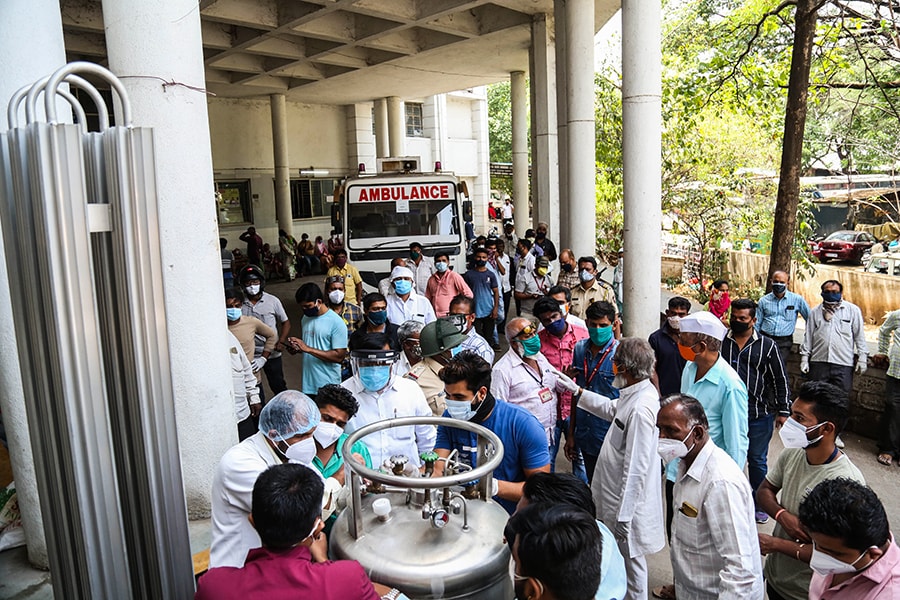
India's health system cracks under the strain as coronavirus cases surge
India is now home to the world's fastest-growing Covid-19 crisis, reporting 314,000 new infections on Thursday and more than 2,000 deaths
 Indian Hospital staff fix the leakage in their oxygen plant after a leakage in the oxygen plant killed 22 Covid-19 patients in Nashik, India on April 21, 2021. A local administrator in western India says 22 Covid-19 patients have died in a hospital when their oxygen supply was interrupted by a leakage in a supply tank. The official says the oxygen supply has since been resumed to other patients; Image: Vinod Singh/Anadolu Agency via Getty Images
Indian Hospital staff fix the leakage in their oxygen plant after a leakage in the oxygen plant killed 22 Covid-19 patients in Nashik, India on April 21, 2021. A local administrator in western India says 22 Covid-19 patients have died in a hospital when their oxygen supply was interrupted by a leakage in a supply tank. The official says the oxygen supply has since been resumed to other patients; Image: Vinod Singh/Anadolu Agency via Getty Images
NEW DELHI — India’s health care system shows signs of buckling under the strain of a second wave of coronavirus infections, as the authorities reported nearly 300,000 new cases on Wednesday and an accident at a COVID-19 hospital killed more than 20 people.
The accident happened at a hospital in the western state of Maharashtra after a leak in the hospital’s main oxygen tank stopped the flow of oxygen to dozens of critically ill people. Televised images showed family members wailing in the wards and nurses frantically pounding on the chests of some patients.
All week, hospitals across India have been warning about an acute oxygen shortage. Many hospital officials said they were just a few hours away from running out. “Nobody imagined this would happen,” said Subhash Salunke, a medical adviser to the Maharashtra government.
India is now home to the world’s fastest-growing COVID-19 crisis, reporting 294,000 new infections on Wednesday and more than 2,000 deaths. As supplies of hospital beds, oxygen and vaccines run low, criticism of the government is building.
In a televised address on Tuesday, Prime Minister Narendra Modi urged people to be more careful but said that lockdowns were a last resort. States and cities are increasingly going into lockdown on their own, and critics say the government’s mixed messages are making matters worse.
©2019 New York Times News Service




